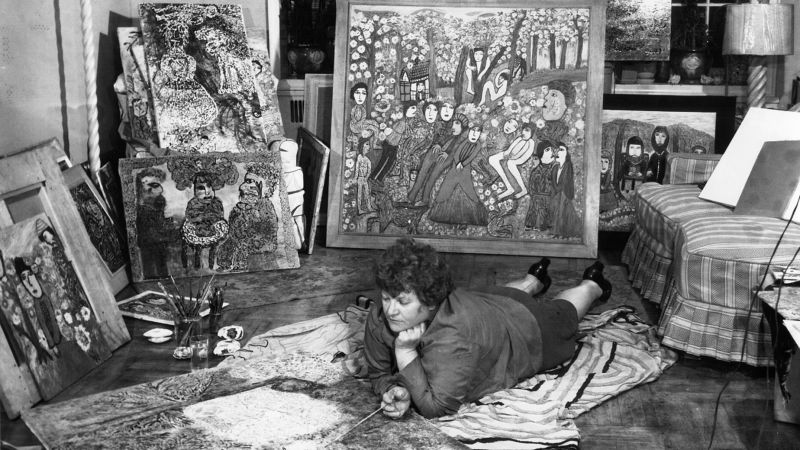
Why this pioneering abstract painter disappeared from the art world at the height of her fame
CNN
Before artists like Jackson Pollock and Willem de Kooning shot to fame, Janet Sobel was gaining ground as an important abstract painter — but largely disappeared from the art world.
In the latter years of World War II, the New York art scene started coalescing around a group of artists including Jackson Pollock and Willem de Kooning, visionaries who would develop a daring new movement known as abstract expressionism, which shifted the art world away from surrealism and its capital in Paris. But some years before these artists became known for splashing paint and swinging their brushes wildly across their studios, Janet Sobel was carefully dripping paint onto her canvases in an all too similar manner. Working on the floor of her family’s crowded apartment in Brighton Beach, Brooklyn, she created intricate swirls that were equal parts intention and chance, blowing through glass pipettes or using her vacuum cleaner to push pigment across the canvas, adding sand for a gritty texture. “When I want to say something, I put it down on paper — with paint,” she told The Brooklyn Daily Eagle in 1946, a time when critics were remarking on her inventiveness and comparing her to the surrealists. “It is not easy to paint. It is very strenuous,” she added. “But it’s something you’ve got to do if you have the urge.” Sobel’s rise in the New York art scene was speedy — and short-lived. She only started painting in the late 1930s, according to some accounts, encouraged to take it up by her son, Sol Sobel, who was studying at the Art Students League. By 1943, the renowned collector and gallerist Sidney Janis had included her work in the exhibition “American Primitive Painting of Four Centuries” at the Arts Club of Chicago. Three years later, Janis later wrote in the Brooklyn Daily Eagle’s article that, “Janet Sobel will probably eventually be known as one of the important surrealist artists in this country.” The next year, Sobel had her first solo show at New York’s Puma Gallery, where the legendary art critic Clement Greenberg visited — with Pollock. In an update to his essay “American-Type Painting,” Greenberg wrote that they “admired these pictures rather furtively,” adding: “Later on, Pollock admitted that these pictures had made an impression on him.” Today, however, it is Pollock who is primarily remembered as the inventor of this style of drip painting; Sobel’s genius has been largely buried in the margins. That narrative has been challenged recently, as institutions from the Museum of Modern Art in New York (MoMA) to the National Gallery of Art in Washington, DC, have sought to reposition Sobel as an important figure in modern art. Now, “Janet Sobel: All-Over,” an exhibition on view at the Menil Collection in Houston — and the first major museum survey dedicated to Sobel’s career — aims to cement her place in art history.
